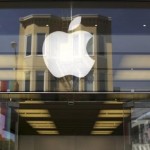Investing in Technology: Outlook and key themes for the technology sector in 2016

Technology was one of the clear winners in 2015, amid a generally lacklustre year for stock markets. The Nasdaq finished the year nearly 6% ahead of the wider S&P 500 index. However, the strength has been confined to a few key names, the socalled ‘FANG’ companies – Facebook, Amazon, Netflix and Google. We might include Microsoft on the list as well. The key question, therefore, for 2016 is whether this strength can broaden out. We believe it can, but these are our key themes for the year:
1. M&A
It was a record year for merger and acquisition activity, and the technology sector was particularly fertile ground for deal-making. This was notable in the semi-conductor industry with around a quarter of US-listed semiconductor stocks bought or in the process of being bought during the year, including Avago/Broadcom, NXP/Freescale and Western Digital/SanDisk. In a sector with no structural growth to speak of, semiconductor companies need mergers to sustain growth and improve the breadth of their product offering. These deals are allowing the companies involved to achieve significant cost savings and may result in significant improvements in earnings for the acquiring companies, even in flat markets for semiconductors. This is likely to be a continued area of opportunity in 2016.
2. FANG loses its teeth
There have been sound reasons behind the strength of the ‘FANG’ quartet in 2015, but we see some threats to its continuation. Although these companies will continue to benefit from the movement to the Cloud, and to video over the Internet, rather than through TV or satellite, we believe the advertising market may be challenging in 2016. While advertising growth may be better in mobile than it is elsewhere, there could be a pause in the growth rates and some of these companies cannot be immune.
3. The growth of virtual reality
Consumers have been toying with virtual reality for some time, but we believe it may finally start to emerge as a new consumer technology trend in 2016. The Oculus headset, for example, offers a significant improvement in the consumer experience and it comes at a good price. With the virtual reality tool, users plug a cell-phone into a device and two images are displayed, one for each eye, which gives the illusion of 3D. This is great for sectors such as real estate, where prospective buyers can take a tour of a new house, or for holidaymakers, who can look around different cities or hotels. This can be realised for less than $300. The immersive experience provided by some of the new virtual reality groups is enticing. Initially it will be used by gamers, with people participating in groups,but the price will come down over time, content will be developed and the trend will spread. Oculus may not be selling 40m devices in 2017 like the iPad, but the trend should have widespread appeal.As yet, we can’t see similar success for 3D TV: To realise 3D TV, consumers need to replace their old (but perhaps not that old) LCD television, which might cost them $5,000-10,000. To enjoy it, a user might need to purchase glasses or to sit in a certain position. We don’t yet consider it a durable trend.
4. The weak getting weaker?
Many of the companies that have hit the headlines in 2015 are likely to struggle once again in 2016: Yahoo has been a notable victim of its weakness in mobile advertising. Although shareholders have focused on its Alibaba stake, its problems are deeper: It has not executed well on its online advertising, with the site taking a long time to load adverts and users bombarded with poorly-targeted ads. It is not a good experience. Its display advertising never worked well, but now it is more apparent. Money is migrating to the digital world and Yahoo is falling behind stronger competitors. We don’t see it turning it round any time soon. It is going to be a tough time for media companies in general. They have been taking budget from newspapers and magazines, but that is likely to slow. TV, in particular, is under assault. The return on investment in TV advertising is less than the return on,say, Instagram and YouTube. Those media companies for whom TV advertising is an important part of their revenue will suffer. Within enterprise technology, traditional vendors will continue to struggle in 2016. Many businesses have stopped purchasing hardware, which acts as a drag on revenue for the vendors. We are starting to see weakness in those companies serving enterprise groups as well. The next group to feel the pain could be the big software companies. We know more applications are moving to the Cloud and more people and companies are using,for example, Amazon databases. In this environment, enterprise software could be particularly vulnerable.
5. Fewer unicorns
2016 may not be a happy year for unicorns: Many of these companies – technology companies with a valuation of over $1bn in the private market -haven’t focused on profitability, instead concentrating on revenue growth. If there is a more difficult economic environment where money is not free any more, they will need to focus on cash flow and profit growth.There will be pressure on these companies to consolidate and sell in 2016, but the valuations in the private market are so high that many will struggle to do so. These unicorns will find it different –and more difficult – in a public environment. There are currently 160 unicorns. We’re predicting there will be less by the end of 2016.
6. The big IPOs of the year
This year’s big IPOs will be the ‘sharing economy’ apps of AirBNB and Uber. Valuations are high, but they are generating a lot of cash. They are creating new industries, so they are undoubtedly worth something. We’ll need to know more about pricing before judging whether they will work out for investors.
Source: You Invest





























